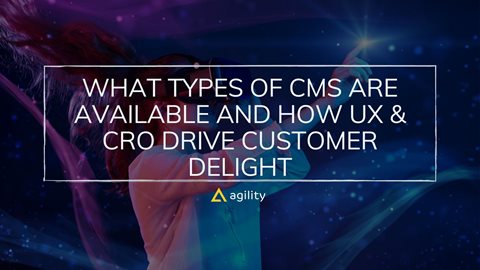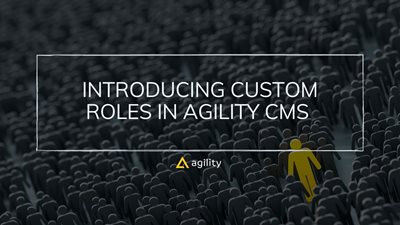What types of CMSs are available and how UX & CRO drive customer delight

Cloud-based CMS
A cloud-based CMS lets you access the content management system by logging in to a site. There is no need to get your IT department to download and install costly software, there is no need for expensive workstations to power the software, and your team isn’t tied to using only the workstations that have the software installed. A cloud-based solution lets you access your CMS from any location with an internet connection, using various devices. It also gives you access to instant updates and usually has online support built into the system.
These advantages make it easy for your teams to create and edit content from anywhere. They also help reduce sunk costs spent on IT and allow that money to be redirected towards building better customer experiences. Combining the better internal user experience with the better customer-facing user experiences makes it easier to deliver delighted customers.
On-premise CMS
An on-premise CMS is more of the standard buy it, install it on a machine, update it for a couple of years, then buy a new version. They don’t have many advantages of a cloud-based solution, but because of the challenges of transforming a local CMS to a cloud-based CMS, many of the established and robust CMSs that have built credibility over the years are still local. These on-premise CMSs power many large enterprises and continue to be the default option for many.
With the established and proven reliability of these CMSs, companies balance the additional costs that come with them with the sometimes unknown costs of transitioning into more adaptable systems.
With both cloud-based and on-premise CMSs, companies get a stable way to deliver content across multiple platforms and customers get a consistent message regardless of where they are or the device they use. Now that the delivery system has been sorted out let’s get back into uncovering insights about your audience.
There are a couple of steps to this.
Step 1 - UX research - Know who your customers are.
Here is where UX research comes in. Remember UX is about creating great user experiences? That all starts with knowing who wants to use your product or service. Understand their roles, their pain points, what stresses them out, and what jobs they need to do. Know what their key decision nudges are, and know the things they see as red flags - critical turn-off signals that, as soon as they see one, they stop considering your product.
How do you get to know these things? Personas. Persona list out all the details we just touched on. Develop the different persona that your audience consists of. Use these to drive your SEO and to know what your customers value.
Step 2 - Harsh Editing - Turn problems into words & phrases.
Knowing your customers, you can anticipate what they search for. Here is where harsh editing comes in. Harsh editing turns feel-good solutions into clear directions.
You know the pain points your customer wants you to help them with. You’ve got some excellent descriptions of your personas’ jobs-to-be-done and key decision nudges. Those descriptions look great. Now, you distill those pain point descriptions into the shortest possible phrases (or even down to single words). Those pain points, neatly summed into the shortest soundbites you can make, now drive your content. They direct what you write about. They get embedded in your content. They become your compass, pulling you towards the content you need to register to create happy customers. They also provide the ideal base for SEO.
Step 3 - CRO Methodologies - Mapping keywords to the buyers’ journey.
Now you have short phrases and words that capture what your customers are looking for. Great!
It's time to use conversion rate optimization (CRO) methodologies to squeeze the best performance out of your content.
Conversion rate optimization is about having a clear picture of each stage of the buyer's journey and what your customer needs to get to the next step. What friction points are stopping them, and what education points do they need to learn to see the value in moving towards your conversion goal? You can use these concepts to create happier customers.
Use conversion rate optimization (CRO) methodologies to squeeze the best performance out of your content.
Start by mapping your customers’ paint points to the buyers’ journey. What pain points do they have at each stage of the buyers’ journey? Take your carefully distilled words and phrases and place them individually into where they belong on the journey map. When they are at the awareness stage, they search for ‘how to create happy customers. When they are at the interest stage, they know more about your solution and are searching for ‘which type of CMS is best.’ And so on.
When your content delivers exactly what they need exactly when they need it, people will spend more time on your content (a great SEO ranking signal). You are almost done.
The following steps are SEO research and implementing that SEO onto the page.
About the Author

Is Headless CMS good for SEO?

Introducing Custom Roles in Agility CMS

Headless CMS for the Financial Industry
Take control of your content
Today's marketers need to be able to quickly create, publish and manage content across a growing number of digital channels. Agility's intuitive UI and familiar authoring experience make it easy for even non-technical teams to deliver exceptional omnichannel experiences.
Learn More